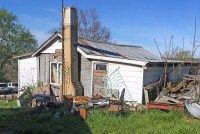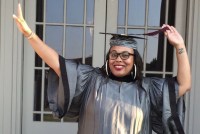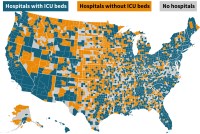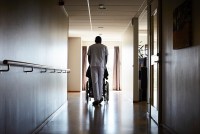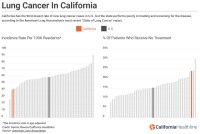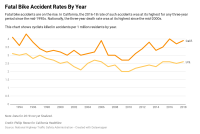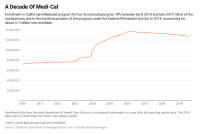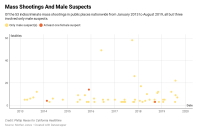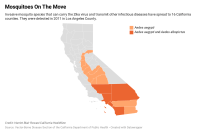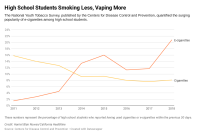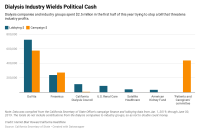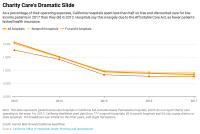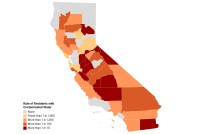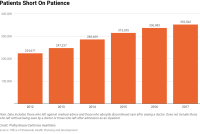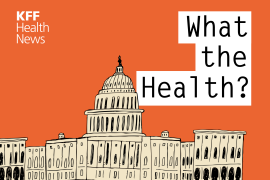Latest KFF Health News Stories
Millions Stuck At Home With No Plumbing, Kitchen Or Space To Stay Safe
In 470,000 American homes spread across every state, washing hands to prevent COVID-19 may not be as easy as turning on a faucet. They don’t have showers or toilets or, in some cases, even water piped into their homes. Nearly a million U.S. homes don’t have complete kitchens and millions more are overcrowded, making it much tougher for people to shelter in place and avoid infection.
The Other COVID Risks: How Race, Income, ZIP Code Influence Who Lives Or Dies
Federal officials have known for nearly a decade which counties are most likely to suffer devastation ― both in loss of lives and jobs ― in a pandemic.
Millions Of Older Americans Live In Counties With No ICU Beds As Pandemic Intensifies
A Kaiser Health News analysis shows that counties with ICUs average one ICU bed for every 1,300 older residents, those most at risk for needing hospitalization.
How Well Does Your Nursing Home Fight Infections? Look It Up Here
More nursing homes have been faulted for failing to follow practices designed to prevent and control infections than for any other type of error. Such lapses have become matters of heightened concern with the spread of the coronavirus this spring, especially as the virus is a bigger threat to the elderly.
The Golden State’s Mixed Record On Lung Cancer
California has one of the lowest rates of new lung cancer cases in the country, attributed largely to its aggressive anti-tobacco policies. But gaps in the state’s health care system mean that people who are diagnosed with the disease, or at a high risk of getting it, often fall through the cracks.
Bike Fatalities Are On The Rise
More than 450 cyclists died in traffic accidents in California from 2016 through 2018, marking the highest three-year death rate in 25 years. Among the factors at play: more cars on roads, distracted driving and a pronounced consumer shift toward SUVs.
California’s health insurance program for low-income people grew 78% between 2010 and 2019 to 12.8 million enrollees. The federal Affordable Care Act spurred the increase, aided by state policies broadening eligibility.
Valley Fever Cases Climb In California’s Central Valley — And Beyond
California and nearby Southwestern states are seeing a sustained rise in cases of valley fever, a potentially serious lung illness caused by a fungus found in desert-type soil. As a result of global warming, the areas where the fungus can thrive are expanding, researchers say.
Not Yesterday’s Cocaine: Death Toll Rising From Tainted Drug
While the U.S. continues to focus mainly on the opioid crisis, cocaine is quietly making a comeback and has become one of the biggest overdose killers of African Americans when tainted with fentanyl.
When Masculinity Turns ‘Toxic’: A Gender Profile Of Mass Shootings
Men are far more likely than women to commit deadly mass shootings, both in California and across the nation. We break down the numbers — and ask experts why gender would have a role in indiscriminate violence.
Invasive Mosquitoes Plunge Deeper Into California
Invasive mosquito species capable of carrying dangerous viruses such as Zika, dengue and yellow fever have been detected in 16 California counties. There’s no evidence the mosquitoes have transmitted these diseases within the state, but health officials urge residents to take steps to slow their spread.
The explosive rise in a serious lung illness linked to vaping spotlights the popularity of e-cigarettes among teens and young adults. Vaping is now so pervasive among young people that federal health officials say its use has fueled a sharp reversal in what had been a celebrated two-decade decline in overall tobacco use by teenagers.
Dialysis Industry Spends Big To Protect Profits
Dialysis companies are fighting a bill in the California legislature that could disrupt their business model. Their weapons: campaign cash and a sophisticated public relations campaign.
Charity Care Spending By Hospitals Plunges
The proportion of money that California hospitals spent on free and discounted care for low-income people dropped by more than half from 2013 to 2017 — even for nonprofit hospitals. Hospitals say there’s less demand for charity care because more people now have health insurance, but consumer advocates counter that people still need help.
Medi-Cal Enrollment Among Immigrant Kids Stalls, Then Falls. Is Fear To Blame?
Enrollment among undocumented immigrant children in California’s Medicaid program started strong before stagnating and then falling. Although this decline is similar to an enrollment decline among all children in Medicaid nationwide, experts believe there are different reasons behind it.
Have Cancer, Must Travel: Patients Left In Lurch After Hospital Closes
As the rural town of Fort Scott, Kan., grapples with the closure of its hospital, cancer patients face new challenges as they try to continue their treatments in different locations.
A Million Californians Don’t Have Clean Drinking Water. Where Do They Live?
More than 10% of residents in 12 California counties don’t have safe drinking water, according to a California Healthline analysis of state water data. State lawmakers have pledged $130 million a year to help bring clean drinking water to Californians who need it.
As The Economy Surges, A Dramatic Drop In Workers On Disability
Experts credit the lowest U.S. unemployment rate in 50 years, along with a more flexible work culture and tighter oversight of who qualifies for federal disability benefits.
Use Of Buprenorphine To Treat Opioid Addiction Proliferates In California
Buprenorphine is becoming an increasingly popular choice among doctors in California for treating opioid addiction. Use of methadone, while still more common, has not gained ground in recent years.
As ER Wait Times Grow, More Patients Leave Against Medical Advice
Crowded emergency rooms are likely to blame. In 2017, the median ER wait time for patients before admission as inpatients to California hospitals was 336 minutes — or more than 5½ hours.



